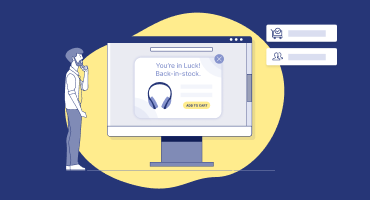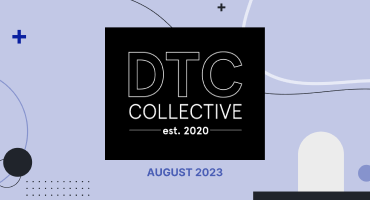Retail is seasonal and cyclical, requiring that marketing teams constantly apply learnings and acclimate to new strategies that drive growth. The BFCM (Black Friday Cyber Monday) season stands apart, demanding a concerted effort from a retailer’s entire ecosystem, from partnering departments through the existing tech stack. Luckily, shared learnings are a cornerstone in Bluecore’s community of retail leaders, customers, and in-house experts.
Our Coffee & Commerce roundtable series is the ideal platform for in-depth, exploratory conversations to drive growth, covering topics such as identification, trigger programs, personalization, holiday campaigns, and customer loyalty. Our summer has been spent collaborating with the most innovative minds in retail to solve the hard problems. Through these discussions, we’ve uncovered the top 11 insights.
- Transparent identification enhances reach, improves personalization, shrinks payback periods, and boosts retention, making it essential for retailers to prioritize ID rate as a key funnel metric.
- Amanda Harkins, Senior Marketing Manager of CRM and Email at Brilliant Earth, finds identification transparency crucial, having as they switched from Wunderkind to Bluecore to prioritize growing their list for retargeting campaigns, which is especially critical for high-value purchases like engagement rings.
- Creating an internal roadmap to increase a retailer’s ID rate is essential to driving growth. This means getting performance marketing, ecommerce and CRM teams on the same page as far as where and how this is measured.
- A starting ID rate may vary per retailer based on the type of product they sell and the size of their target market, but all retailers have an opportunity to increase their ID rate to convert more shoppers.
- Email capture pop-ups are not the only way retailers should maximize identification; your technology should identify shoppers across all site touchpoints, including account creation, login, and guest checkout.
- Many retailers lack confidence in maximizing onsite sign-ups and are primarily reliant on abandonment triggers for conversions, resulting in a large percentage of unidentified site visitors and conversions left on the table, so retailers are looking to their tech partners to change this.
- Retailers should tailor identification strategies to resonate with different audience groups by leveraging product recommendations based on unique preferences, such as for a certain category or a certain discount. Bluecore’s predictive models can determine visitor preferences based on just a few page visits to enhance the shopping experience.
- Mark Danisewicz, Director of eCommerce, highlights Cole Haan’s site capture approach with an intuitive pop-up module, refining it to provide an engaging and informed interaction for potential customers, avoiding immediate offers and creating a welcoming environment that introduces the brand before presenting offers.
- Amanda Harkins, Senior Marketing Manager of CRM and Email at Brilliant Earth, noted that they use a “capsule series” based on what a visitor is interested in. We ask when they are looking to purchase. They create styled emails that are personalized and feel like they are from a stylist named “Gemma” or “Julie.” If they respond, they connect to a real rep and get a great experience and have a one-to-one communication with a person.
- Brands must test both personalized entry and exit pop-ups for engagement, particularly during holiday season when there’s an influx of new visitors.
- Retailers need to combat email fatigue and earn customer trust with personalized approaches. This means offering value beyond discounts, like unique perks or experiences, which also preserves margins.
- Utilizing social proof in holiday campaigns can drive visitor excitement of knowing what other people are trying and buying to drive urgency for a purchase.
- Identifying household purchases can be challenging, but retailers can offer unique referral codes to tie multiple customers to a single household for better segmentation.
- Loyalty programs that reward various actions and offer value beyond discounts, such as points for social engagement, can contribute to a more inclusive approach to customer retention.
From these discussions, we’ve surmised that prioritizing identification and personalization will drive customer retention and loyalty that boosts revenue. As retailers focus on beating daily comps, leveraging automated campaigns to execute against their holiday plans will shape more efficient and impactful programs. Get in early with our next Coffee & Commerce discussion!





